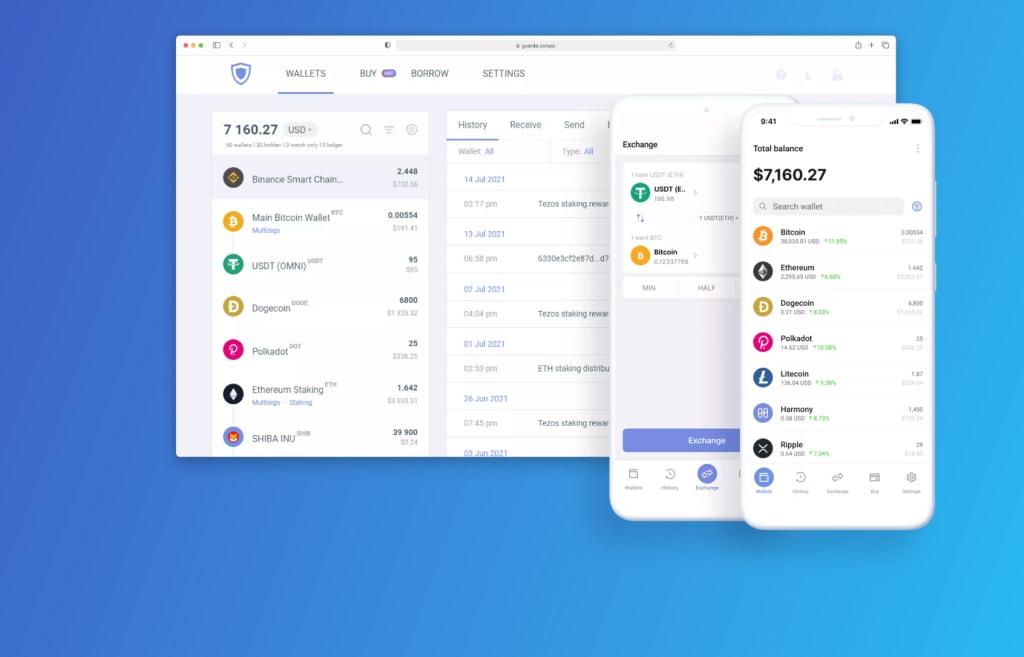A Comprehensive Guide to Cryptocurrencies and How to Manage Them
Let's learn about the history of crypto, technology behind it and tips to manage your assets

The world of cryptocurrencies has evolved significantly since the inception of Bitcoin in 2009. Today, the digital currency landscape is vast, complex, and offers a plethora of opportunities for investors and enthusiasts alike. This article aims to provide a comprehensive overview of cryptocurrencies, the principles and technology behind them, why there are so many coins and tokens, and practical guidance on how to choose and manage them.
What Are Cryptocurrencies?
Cryptocurrencies are digital currencies that use cryptography to secure transactions, control the creation of new units, and verify the transfer of assets. They are decentralized, meaning they operate without a central authority, and rely on a technology called blockchain, a distributed ledger that records all transactions across a network of computers. Bitcoin and Ethereum are two best well-known cryptocurrencies, but there are many others with different features and purposes - they are called altcoins (alternative coins).
Brief History of Cryptocurrencies
In 1983, American cryptographer David Chaum pioneered the concept of anonymous cryptographic electronic money, known as ecash. By 1995, Chaum's vision materialized through Digicash, an early incarnation of cryptographic e-payments. Digicash necessitated special software for users to withdraw digital notes from banks, generate unique encrypted keys for transactions, and transfer the notes to recipients. This system ensured that users' transactions remained untraceable by banks, governments, or any other parties.
Between 1996 and 2008, various cryptocurrency concepts were proposed. The turning point in the history of cryptocurrencies came in 2009 when the pseudonymous Satoshi Nakamoto introduced Bitcoin to the world. This groundbreaking invention marked the beginning of the cryptocurrency era, attracting increased attention, investments, and participation in the field.
Post-2009, several well-known cryptocurrencies emerged:
- 2009: Bitcoin (BTC) is created by the pseudonymous person or group, Satoshi Nakamoto
- 2011: Litecoin (LTC) is released
- 2013: Ripple (XRP) is launched
- 2015: Ethereum (ETH) is introduced, featuring smart contracts
- 2017: Initial Coin Offering (ICO) boom and thousands of new cryptocurrencies emerge
- 2020-2021: DeFi (Decentralized Finance) and NFT (Non-Fungible Token) revolutions reshape the crypto landscape
Principles and Technology Behind Crypto
- Decentralization: Cryptocurrencies operate on a distributed network of computers, eliminating the need for a central authority.
- Blockchain: A public, transparent ledger that records all transactions and is secured by cryptography.
- Consensus Mechanisms: Algorithms that ensure agreement among network participants on the validity of transactions, e.g., Proof-of-Work or Proof-of-Stake.
- Public and Private Keys: Cryptographic keys that enable secure transactions and access to digital assets.
- Anonymity and Privacy: Some cryptocurrencies prioritize privacy, allowing users to transact without revealing personal information.
Why Are There So Many Coins and Tokens?
The vast number of cryptocurrencies is a result of the versatility and adaptability of the underlying blockchain technology. Different coins and tokens are created to serve different purposes, such as:
- Store of value (e.g., Bitcoin)
- Enable smart contracts (e.g., Ethereum)
- Facilitate private transactions (e.g., Monero)
- Power decentralized applications (e.g., EOS)
- Represent digital assets or interests (e.g., Crypto tokens)
Choosing and Managing Cryptocurrencies
When deciding to invest in or use cryptocurrencies, consider factors such as the project's fundamentals, development team, use case, and market potential. Thoroughly research the technology, community support, and historical performance before making a decision. Additionally, assess the project's whitepaper, roadmap, and track record to ensure its long-term viability. However, sometimes these are meme coins and tokens which gain the most value. So, stay in the loop and do not miss any hype topics or buzz around newly created coins.
Once you have chosen a cryptocurrency, managing your digital assets involves securely storing, transacting, and monitoring your holdings. Utilize reputable wallets, exchanges, and portfolio tracking tools to ensure the safety and success of your investments.
Step-by-Step Guide for Managing Crypto:
- Choose a secure wallet: Select a reputable hardware or software wallet to store your private keys. Guarda is a non-custodial wallet which ensures safety. It supports more than 400,000 coins and tokens and offers the ability to connect to Ledger devices.
- Research: Investigate the project's background, team, technology, and long-term potential. Stay updated with the latest news and developments in the crypto space.
- Diversification: Spread your investments across various cryptocurrencies to minimize risk and maximize potential returns. For instance, you can stake some of your assets to gain even more value.
- Monitor performance: Regularly track the performance of your investments and stay informed about market trends and developments.
- Update security measures: Regularly update your passwords and enable two-factor authentication to safeguard your accounts.
- Stay informed: Follow industry experts, read articles, and participate in community discussions to enhance your knowledge and stay current with the ever-evolving world of crypto.
- Tax compliance: Ensure you are aware of and comply with local tax regulations and reporting requirements related to cryptocurrency investments.
- Plan an exit strategy: Have a clear plan for liquidating your assets when the time comes, whether it's to realize profits, cut losses, or rebalance your portfolio.
About the Creator
Guarda Wallet
Guarda Wallet is a non-custodial crypto wallet which supports 60+ blockchains and more than 400,000 assets. Follow for educational crypto content!
Enjoyed the story? Support the Creator.
Subscribe for free to receive all their stories in your feed. You could also pledge your support or give them a one-off tip, letting them know you appreciate their work.






Comments
There are no comments for this story
Be the first to respond and start the conversation.